Unveil the Best Flowers for Small Garden Spaces Today
Are you looking to transform your small garden into a blooming paradise? Discover the best flowers for small garden spaces in our comprehensive guide. Whether you have a compact garden, limited space, or a small balcony, these flowers will add beauty and color to your outdoor oasis.
Key Takeaways:
- Choosing the right flowers is essential for the success of small garden spaces.
- Consider factors like plant size, color, and blooming time when selecting flowers.
- Vertical planting solutions and container gardening are great options for maximizing space.
- Low-maintenance and drought-tolerant flowers are ideal for busy gardeners.
- Create focal points with small trees and compact shrubs.
In order to make the most of your small garden, it’s important to choose the right flowers that will thrive in limited space. Consider factors such as plant size, color, blooming time, and maintenance requirements. By carefully selecting the best flowers for small garden spaces, you can create a beautiful and vibrant outdoor space.
One approach to maximize space in small gardens is through vertical planting solutions. Utilize walls, trellises, and wall-mounted planters to add greenery and create a visually appealing backdrop. This helps to make the most of limited space and adds dimension to your garden.
Container gardening is another great option for small garden spaces. It allows you to grow a variety of flowers in portable containers, making it easy to rearrange your garden as needed. This is particularly useful for those with patio or balcony gardens, where space is often at a premium.
For busy gardeners or those with limited time for maintenance, opting for low-maintenance and drought-tolerant flowers is a smart choice. These flowers require less watering and care, making them perfect for small garden spaces.
To create focal points in your small garden, consider planting small trees and compact shrubs. These plants add vertical interest and create a visual centerpiece. Choose varieties that are well-suited for small spaces and have beautiful blooms or foliage.
By carefully selecting the best flowers, utilizing vertical planting solutions, incorporating container gardening, and creating focal points with trees and shrubs, your small garden can become a thriving oasis of color and beauty.
Transform your small garden into a blooming paradise with these best flowers for small garden spaces.
Factors to Consider for Small Garden Success
Before diving into the best flowers for small garden spaces, it’s essential to consider a few key factors that can contribute to the success of your mini garden oasis. By taking these factors into account, you can ensure that your small garden thrives and becomes a beautiful and enjoyable space.
Garden Ideas
When working with a small garden, it’s important to have a clear vision of your garden ideas. Consider the overall design and layout you want to create. Think about whether you prefer a minimalist, modern look or a more traditional, cottage garden style. Having a defined concept will help you make informed choices when selecting flowers and plants.
Space
Space is a valuable commodity in small gardens, so it’s crucial to make the most of every inch. Optimize your space by utilizing vertical planting techniques. Look for opportunities to incorporate trellises, wall-mounted planters, or hanging baskets to add greenery without taking up valuable ground space.
Partial Shade
Many small gardens may have areas with partial shade due to nearby buildings or trees. When selecting flowers, consider their light requirements and choose plants that thrive in partial shade. This will ensure that your garden remains vibrant and colorful, even in areas with limited sunlight.
Best Plants for Small Gardens
Not all plants are suitable for small gardens. Choose plants that are compact in size but still offer visual impact. Look for flowers with interesting foliage, long flowering times, or beautiful winter berries. Consider the USDA hardiness zone to ensure your chosen plants will thrive in your specific location.
Flower Bed Ideas
When planning your small garden, consider the design and layout of your flower beds. Opt for curved or diagonal shapes instead of straight lines to create visual interest. Mix different flowers with varying heights and colors to create depth and texture. Experiment with different combinations to find the perfect flower bed ideas for your small garden.
By taking these factors into consideration, you can set the foundation for a successful small garden. With careful planning and thoughtful plant selection, you can create a stunning outdoor space that brings joy and beauty to your home.
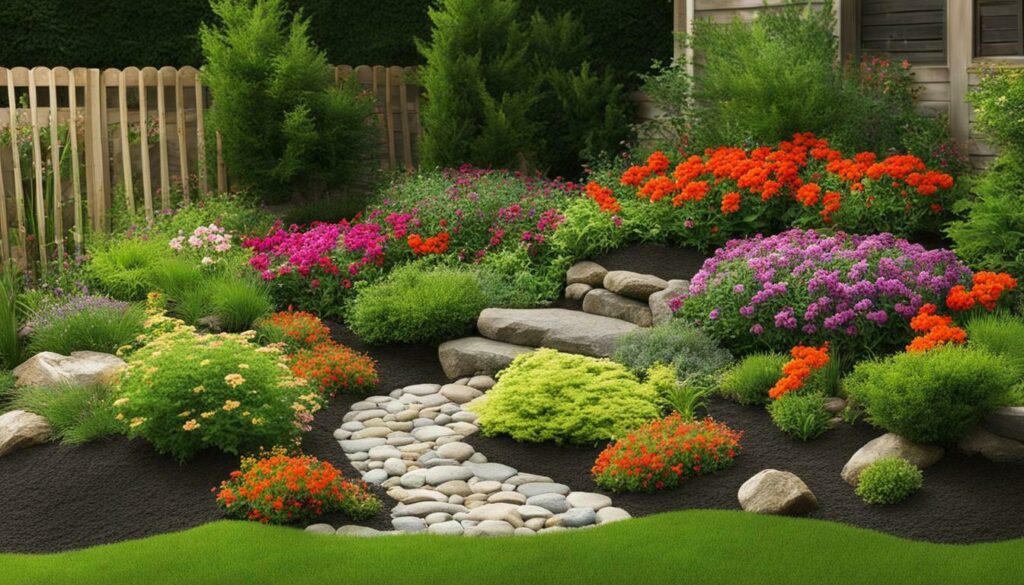
Table 1: Flowers suitable for small gardens
| Flower | Description |
|---|---|
| Pittosporum tenuifolium ‘Tom Thumb’ | A compact evergreen shrub with plum-colored leaves and dark stems. Suitable for year-round color. |
| Sarcococca confusa | A shrub with evergreen foliage and scented blooms followed by purple berries. Easy-care plant suitable for partial shade. |
| Hydrangea arborescens ‘Annabelle’ | A deciduous shrub with white globe-shaped flowers turning pale lime green in autumn. Ideal for full sun or partial shade. |
| Tibetan cherry tree | A small tree with polished bark, oval dark green leaves, and small white flowers in late spring. Suitable for most conditions. |
| Betula Jacquemontii | A silver birch tree with white bark and deep maroon fall foliage. Perfect for winter interest in small gardens. |
| Amelanchier Lamarkii | A slim, upright tree with white star-shaped flowers and copper-colored foliage. Suitable for damp conditions and most soil types. |
| Acer palmatum ‘Little Princess’ | A compact acer with ever-changing foliage, ideal for small gardens. Perfect for adding autumn color. |
| Malus ‘Butterball’ | A crab apple tree with lush purple foliage and dark red fruits. Ideal for small garden layouts and full sun or part shade. |
| Polystichum setiferum (fern) | A fern with lush foliage that adds texture to small gardens. Perfect for shady spots and most soil types. |
Remember, these are just a few examples of the best flowers and plants for small gardens. The key is to choose plants that suit your personal style and garden conditions. With careful consideration and planning, you can create a beautiful and thriving small garden space.
Choosing the Right Flowers for Small Gardens
When it comes to choosing flowers for small gardens, the possibilities are endless. Consider the color you want to incorporate, the type of flowers that thrive in your region, and the various ways you can utilize your outdoor space.
One important factor to consider is flower color. The right color can create a visually stunning display in your small garden. Whether you prefer vibrant and bold hues or soft and delicate shades, choose flowers that will complement your overall garden design. Consider creating a color scheme or using contrasting colors to add visual interest.
Another consideration is the type of flower. Annual flowers are a great option for small gardens because they provide continuous blooms throughout the growing season. They also offer a wide variety of colors and sizes to choose from. Perennial flowers are another option, as they come back year after year and require less maintenance.
To make the most of your small garden space, utilize different planting methods. Pots are a versatile option that allows you to easily move flowers around and create focal points. You can also consider mass planting, which involves planting a large quantity of the same flower in one area for a bold and impactful display. Hanging baskets are a great way to add vertical interest and maximize space in small gardens.
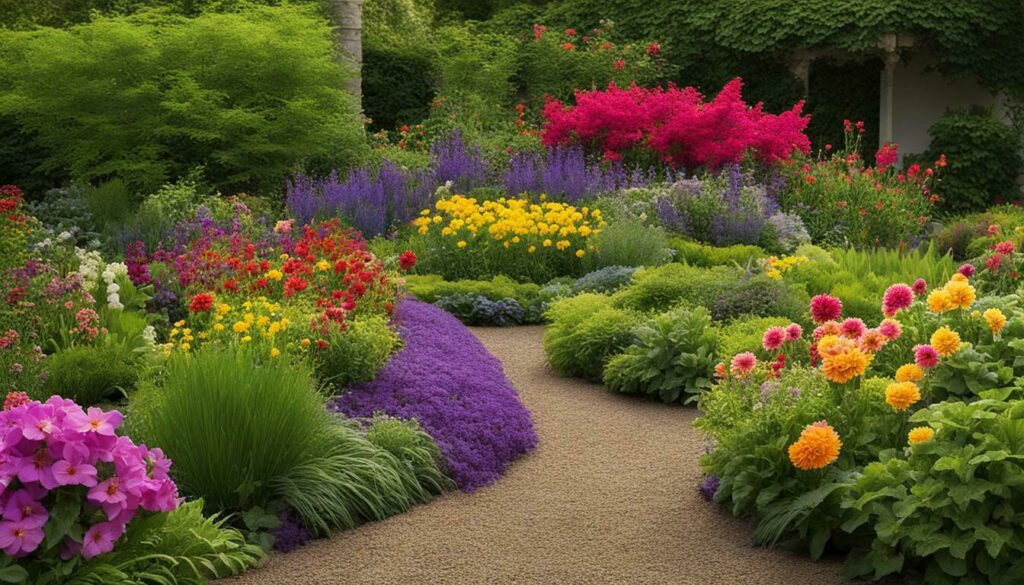
When choosing flowers for small gardens, it’s important to consider the available space. Opt for compact flowering plants that won’t overwhelm your garden. Look for varieties that have a smaller growth habit or can be easily pruned. This will ensure that your garden remains balanced and proportional.
To create a visually appealing display, consider combining different types of flowers. Mix and match different colors, shapes, and textures to create depth and interest. Incorporate flowers with different bloom times to ensure that there is always something in bloom throughout the growing season. This will keep your small garden looking beautiful and vibrant.
Conclusion
Choosing the right flowers for small gardens requires careful consideration of color, type, and planting methods. By selecting flowers that complement your garden design, utilizing different planting methods, and maximizing your available space, you can create a stunning and vibrant small garden that brings joy and beauty to your outdoor space.
Flowering Plants for Small Garden Spaces
If you’re looking to add a burst of color and beauty to your small garden, consider these flowering plants that are perfect for compact spaces. These plants will not only brighten up your garden but also thrive in limited space, making them ideal choices for small gardens.
1. Bloom
One of the key factors to consider when choosing flowering plants for small garden spaces is their blooming characteristics. Look for plants that have a long flowering time or plants that produce multiple blooms throughout the season. This will ensure that your small garden remains vibrant and colorful for an extended period.
One of the flowering plants that fits this criteria is the Pittosporum tenuifolium ‘Tom Thumb’. With its wavy edged, plum-colored leaves and dark grey or black young stems, this compact, evergreen shrub provides year-round color, making it a perfect choice for small gardens. Another option is the Sarcococca confusa, which blooms in late winter or early spring with scented flowers followed by purple berries.
2. Foliage
In addition to blooms, foliage can also play a significant role in adding visual interest to your small garden. Look for plants that have interesting foliage colors or textures that can provide a backdrop for your flowering plants. This will create depth and enhance the overall aesthetics of your garden.
One plant that stands out for its foliage is the Hydrangea arborescens ‘Annabelle’. This elegant deciduous shrub has creamy white globe-shaped flowers in summer and pale lime green fall foliage. The seed heads can be left on during winter, adding interest to your garden even in colder months.
3. Ornamental Grass and Vertical Gardens
To maximize space in your small garden, consider incorporating ornamental grasses and vertical gardening techniques. Ornamental grasses can add texture and movement to your garden while taking up minimal ground space. Vertical gardens, such as trellises or wall-mounted planters, provide an opportunity to grow plants vertically, utilizing the height of your garden.
Consider incorporating ornamental grasses like Miscanthus sinensis or Panicum virgatum for their foliage and architectural appeal. These grasses add visual interest to a small garden without overwhelming the space. Use trellises or wall-mounted planters to grow climbing plants such as Clematis or Honeysuckle, which can add color and fragrance to your small garden.
4. Raised Beds for Colorful Blooms
Raised beds are another great option for small garden spaces as they provide a compact and organized way to grow plants. Fill your raised beds with colorful flowering plants that will make a statement in your small garden.
Consider planting annual flowers like Marigolds or Petunias for their vibrant colors and continuous blooming throughout the season. These flowers will provide a burst of color and create a visually stunning display in your small garden.
Conclusion
Incorporating flowering plants into your small garden is a great way to add beauty and charm to limited spaces. By choosing plants with long flowering times, interesting foliage, and utilizing techniques like vertical gardening and raised beds, you can create a vibrant and visually appealing garden that thrives in compact areas.
Remember to select plants that are suitable for your specific growing conditions and follow proper care instructions to ensure the success of your small garden. With these flowering plants, your small garden will become a delightful oasis bursting with color and life.

Compact Shrubs for Small Garden Spaces
If you’re in search of a low-maintenance solution to add structure and beauty to your small garden, these compact shrubs are the perfect choice. Their small size makes them ideal for limited spaces, while their stunning foliage, fragrant flowers, and ease of care make them a must-have for any small garden.
1. Pittosporum tenuifolium ‘Tom Thumb’
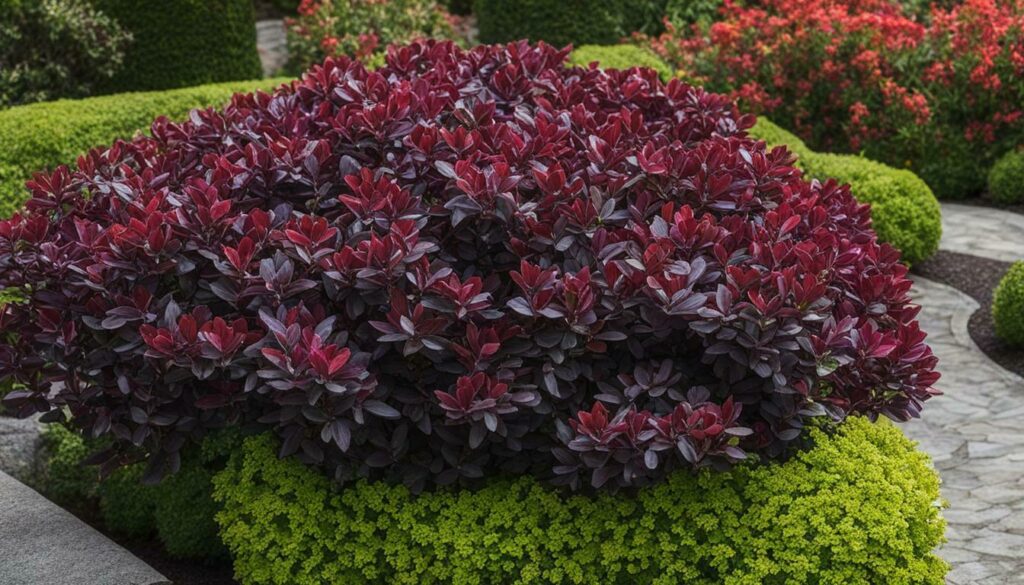
Pittosporum tenuifolium ‘Tom Thumb’ is a compact evergreen shrub that features wavy-edged, plum-colored leaves and dark grey or black young stems. It adds year-round color to your garden with its foliage, although the leaves turn green in shady areas. ‘Variegatum’, another variety of Pittosporum tenuifolium, has light green and white-tipped leaves, adding even more interest to your small garden. This shrub grows best in a sheltered spot away from strong winds.
2. Sarcococca confusa

Sarcococca confusa, also known as sweet box, is a fantastic choice for adding fragrance to your small garden. This shrub features evergreen foliage and produces highly scented white blooms in late winter or early spring, followed by purple berries. It thrives in almost any soil in sun or partial shade and requires a light trim after flowering to maintain its compact and bushy form.
3. Hydrangea arborescens ‘Annabelle’
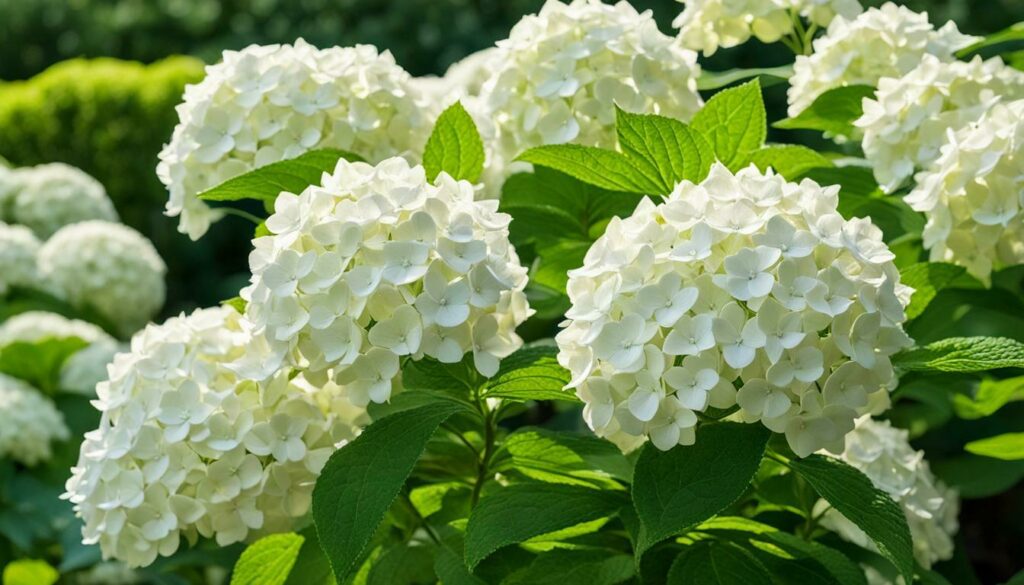
Hydrangea arborescens ‘Annabelle’ is a stunning deciduous shrub native to North America. It features creamy white globe-shaped flowers on upright stems, which turn pale lime green in autumn. The seed heads can be left on the plant during winter, adding visual interest to your small garden. Plant ‘Annabelle’ in full sun or part shade and water it regularly during dry periods. It can be grown in a pot, but it will thrive best when planted in the ground.
4. Daphne odora
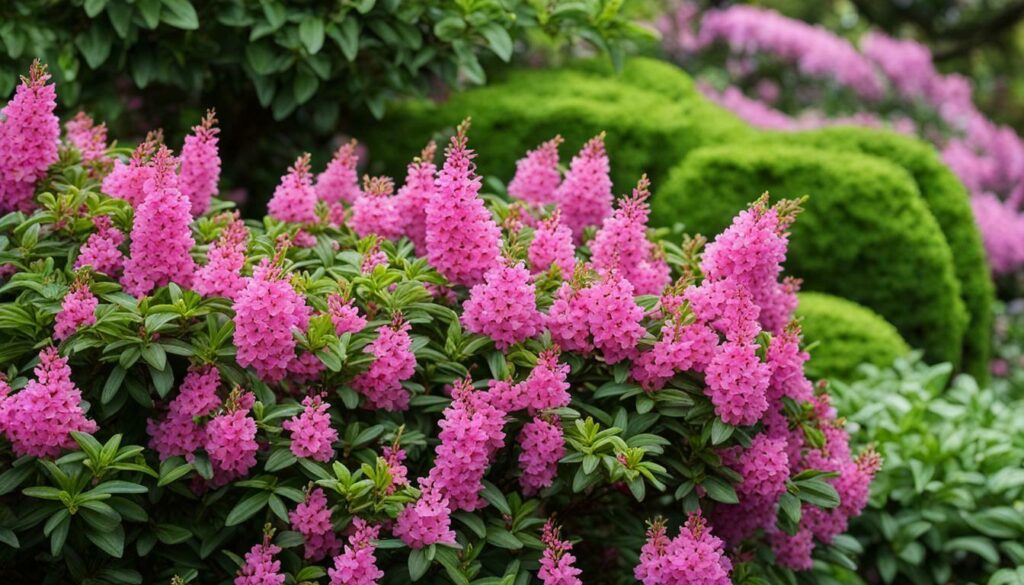
Daphne odora, commonly known as winter daphne, is a compact evergreen shrub that delights with its fragrant flowers and glossy foliage. It produces clusters of pink or white blooms in late winter or early spring, filling your small garden with a delightful scent. Daphne odora prefers a sheltered spot in partial shade and well-drained soil. It requires minimal maintenance and adds a touch of elegance to any small garden.
5. Euonymus fortunei ‘Emerald Gaiety’
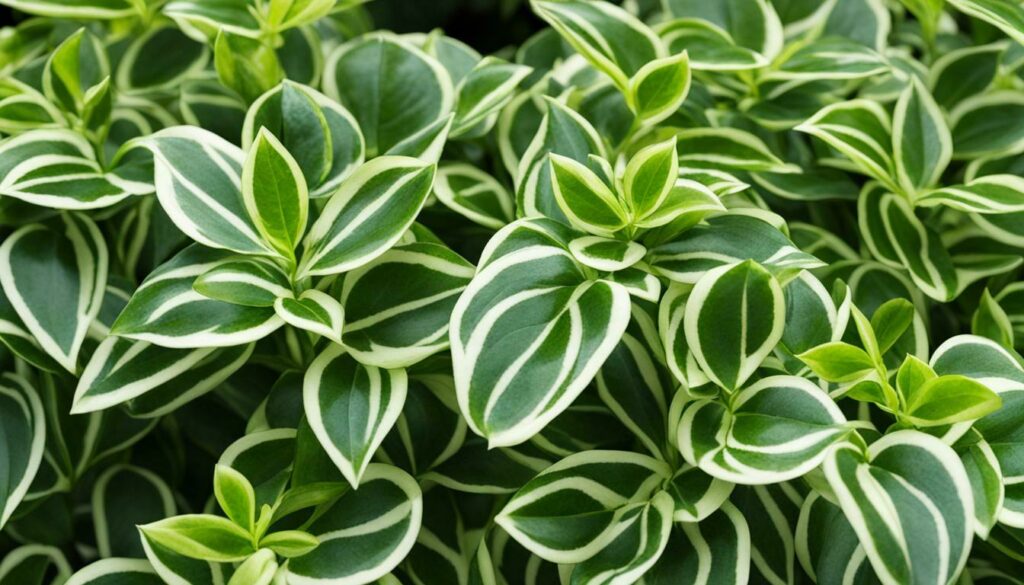
Euonymus fortunei ‘Emerald Gaiety’ is a versatile evergreen shrub that offers year-round interest in your small garden. Its variegated leaves, featuring green centers and white edges, create a striking visual contrast. This compact shrub is easy to grow and requires minimal maintenance. It can be used as a ground cover, or pruned into a neat hedge or topiary. Plant ‘Emerald Gaiety’ in sun or partial shade for best results.
Conclusion
These compact shrubs are the perfect choice for adding beauty and structure to your small garden. With their stunning foliage, fragrant flowers, and low maintenance requirements, they will thrive in limited garden spaces and provide year-round interest. Consider incorporating these compact shrubs into your small garden to create a beautiful and manageable outdoor oasis.
Create a Captivating Focal Point with Small Trees
Create a captivating focal point in your small garden with these stunning small trees that are guaranteed to draw the eye and add beauty to your space. Whether you have limited garden space or want to enhance a compact area, these small trees will provide the perfect touch of elegance and charm.
Tibetan Cherry Tree
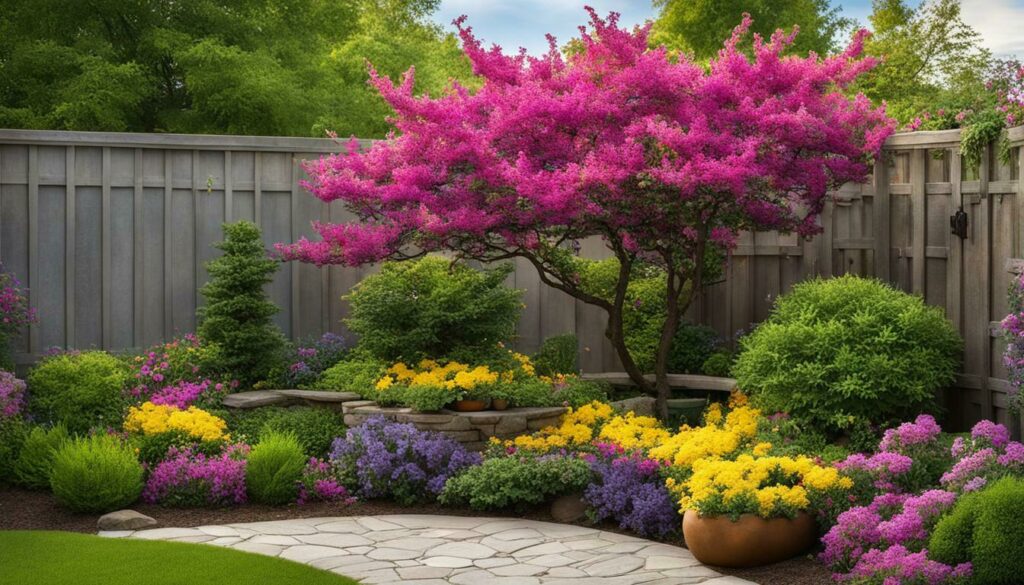
The Tibetan cherry tree is an excellent choice for creating a focal point in small garden spaces. With its year-round interest, including polished conker brown tactile bark that peels in autumn to reveal a rich bronze red underneath, this tree offers both visual appeal and unique texture. It features oval dark green leaves and small white flowers in late spring, followed by yellow fall foliage.
Choosing a single stem tree ensures it will not grow taller than around 16ft (5m) in 20 years, making it ideal for small gardens. It grows well in most conditions but should be avoided in wet or chalky areas. Additionally, its tolerance for pollution makes it a suitable choice for urban gardens.
Amelanchier Lamarkii
The Amelanchier Lamarkii, also known as serviceberry or juneberry, is another exceptional small tree for creating a focal point. This slim, upright tree features soft copper-colored foliage and swathes of pretty white star-shaped flowers in April and May, adding a touch of elegance to any small garden.
It grows well in damp conditions and most soil types, with a preference for clay or sandy soil. Native to North America, it also thrives in the UK, making it an excellent choice for small gardens.
Acer
Acer trees, commonly known as Japanese maples, are renowned for their incredible autumn colors and are perfect for small garden spaces. With many different varieties available, there is an Acer suitable for every small garden.
For a compact option, consider Acer palmatum ‘Little Princess.’ This variety won’t grow taller than 5ft (1.5m) and offers ever-changing foliage throughout the seasons. Another stunning choice is Acer palmatum dissectum ‘Garnet,’ which reaches a maximum height of 6.5ft (2m) and features beautiful red leaves.
These small trees thrive in full sun or part shade and require regular watering during spring and late summer. They can be grown in both gardens and containers, adding a touch of grace and natural beauty to any small garden space.
Crab Apple
Crab apple trees are perfect for small gardens, offering beautiful blossom in spring and jewel-bright fruits that stay on the tree throughout autumn and winter. The dwarf Malus toringo ‘Aros’ is an ideal variety for small garden layouts, featuring lush purple foliage and dark red fruits. It reaches a maximum height of 10ft (3m) and is suitable for growing in pots.
Another recommended selection is Malus ‘Butterball,’ which produces multiple tiny golden apples that can be used in various culinary creations. This tree can reach a height of 13ft (4m) and thrives in full sun or part shade. Regular pruning during winter ensures healthy growth and fruit production.
Miniature Hostas
While not technically trees, miniature hostas are perfect for small gardens and can provide the same focal point effect. These shade-loving plants come in a variety of sizes and shades of green, offering a delightful addition to any small garden. Consider ‘Mouse Ears’ for a compact variety that adds interest and texture.
When it comes to creating a captivating focal point in your small garden, these small trees are sure to impress. With their striking features, stunning foliage, and compact size, they offer the perfect solution for adding beauty and visual interest to limited garden spaces.
Source:
- The best plants for small gardens have to work extra hard. This could mean that they have a long flowering time, or that they stay attractive in more than one season, perhaps with dazzling spring or summer flowers followed by interesting seed heads, brilliant autumn foliage and beautiful winter berries.
Vertical Planting Solutions for Small Garden Spaces
Don’t let limited ground space limit your gardening potential. Explore the world of vertical planting and discover how you can create a lush and vibrant garden in even the smallest of spaces. Vertical gardening is a clever technique that maximizes every inch of available space by utilizing walls, fences, and other vertical surfaces to grow plants. By taking advantage of vertical planting solutions, you can transform your small garden into a green oasis. Here are some ideas to get you started.
Climbing Plants and Trellises
Climbing plants are the perfect choice for small garden spaces as they can add height and visual interest without taking up much floor space. Opt for fast-growing climbers such as clematis, sweet peas, or climbing roses. These plants will quickly cover trellises or pergolas, creating a stunning vertical display. Choose trellises that complement your garden’s style and securely anchor them to a wall or fence for stability. With the right support, climbing plants can turn bare walls into living tapestries.
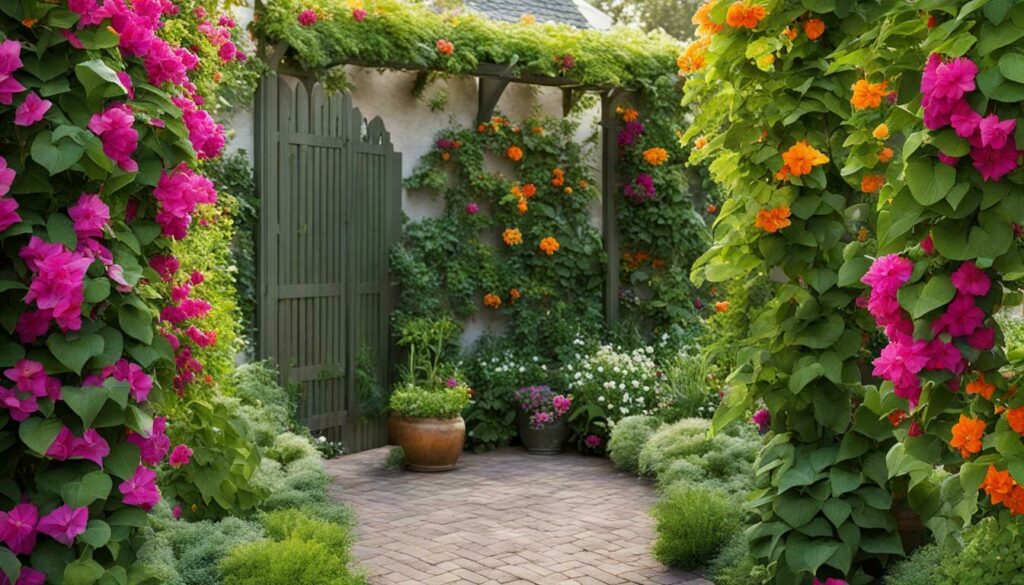
Wall-Mounted Planters
If you have limited ground space, wall-mounted planters are a great solution for adding greenery to your small garden. These planters can be easily attached to vertical surfaces, such as walls, fences, or even balcony railings. You can grow a variety of plants in these planters, from trailing vines and colorful flowers to herbs and succulents. Be sure to choose planters that are suitable for outdoor use and provide proper drainage for your plants.
Vertical Gardens
Vertical gardens, also known as living walls or green walls, are an innovative way to bring a touch of nature to small garden spaces. These structures consist of a framework that holds plants and provides an attractive vertical display. There are various types of vertical gardens, from modular systems to DIY designs. You can create a vertical garden using pockets or containers attached to a wall or by planting directly into a vertical planter filled with soil. Vertical gardens are not only visually appealing but also offer benefits such as improved air quality and insulation.
Space-Saving Techniques
To make the most of your vertical planting, consider using space-saving techniques such as stacking pots or using hanging baskets. Stacking pots allows you to grow multiple plants in a small footprint, while hanging baskets can be suspended from walls or overhead structures to add layers of greenery. These techniques are particularly useful for growing herbs, flowers, or small vegetables in limited garden spaces.
Add Greenery to Small Gardens
Vertical planting solutions offer a practical and creative way to add greenery to small garden spaces. Whether you choose climbing plants, wall-mounted planters, vertical gardens, or space-saving techniques, these strategies can transform your small garden into a beautiful and vibrant oasis. Embrace the possibilities of vertical gardening and make the most of every inch of your limited space.
Remember, even with limited ground space, you can still create a lush and thriving garden by going vertical. Explore these vertical planting solutions and bring life, color, and beauty to your small garden.
Low-Maintenance Flower Options for Small Garden Spaces
If you’re looking for flowers that require minimal upkeep but still provide color and beauty in your small garden, consider these low-maintenance options that are sure to impress.
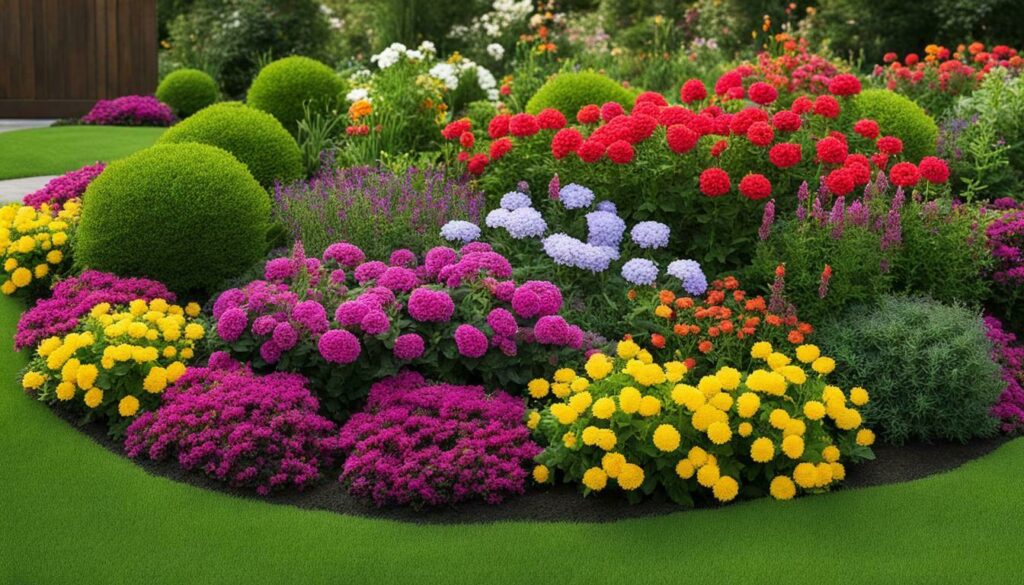
1. Sedum (Stonecrop)
Sedums are a popular choice for low-maintenance gardens, and for good reason. These hardy succulents come in a variety of colors and forms, from ground-hugging varieties to taller, upright varieties. They require little watering and will thrive in both sun and partial shade. Sedums are also attractive to pollinators, making them a great option for creating a wildlife-friendly garden.
2. Lavender
Lavender is not only known for its delightful fragrance, but also for its low-maintenance nature. This perennial herb thrives in sunny locations and well-drained soil. Once established, lavender requires minimal watering and is tolerant of drought conditions. Additionally, its vibrant purple flowers attract bees and butterflies, adding beauty and biodiversity to your small garden.
3. Coreopsis (Tickseed)
Coreopsis is another low-maintenance flower that will brighten up your small garden. With its cheerful yellow, orange, or red blooms, coreopsis adds a pop of color to any space. It is a hardy perennial that is drought-tolerant and thrives in full sun. Coreopsis also attracts pollinators, making it a beneficial addition to your garden.
4. Black-Eyed Susan (Rudbeckia)
Black-Eyed Susan is a classic flower that requires minimal care but offers abundant blooms. These bright yellow flowers with dark centers add a touch of sunshine to any small garden. Black-Eyed Susan is a tough perennial that tolerates various soil conditions and is drought-tolerant. It thrives in full sun and attracts butterflies and other beneficial insects.
5. Echinacea (Coneflower)
Echinacea, also known as coneflower, is a hardy perennial that requires little maintenance. Its striking pink or purple flowers attract pollinators while adding color to your garden. Echinacea prefers well-drained soil and full sun, but it can tolerate some shade. Once established, it is drought-tolerant and will continue to bloom year after year.
| Flower | Light Requirements | Watering Needs | Attracts Pollinators |
|---|---|---|---|
| Sedum | Sun to partial shade | Low | Yes |
| Lavender | Full sun | Low | Yes |
| Coreopsis | Full sun | Low | Yes |
| Black-Eyed Susan | Full sun | Low | Yes |
| Echinacea | Full sun to partial shade | Low | Yes |
With these low-maintenance flower options, you can enjoy a colorful and vibrant small garden without spending a lot of time and effort on maintenance. Choose the flowers that best suit your garden’s light and soil conditions, and sit back and enjoy the beauty they bring to your outdoor space.
Container Gardening for Small Garden Spaces
Don’t let limited outdoor space stop you from enjoying the beauty of a garden. Discover the joys of container gardening and create a vibrant oasis in even the smallest of garden spaces. Container gardening is a versatile and practical solution for those with compact gardens, patio areas, or balconies.
By carefully selecting the right container plants and utilizing vertical space, you can maximize your garden’s potential and create a stunning display of foliage and blooms. Whether you have a green thumb or are new to gardening, container gardening offers endless possibilities for creativity and personalization.

When it comes to selecting plants for your container garden, consider the planting season and the specific requirements of each plant. Some plants thrive in early spring, while others flourish in the summer or fall. By choosing a combination of plants that bloom at different times, you can ensure a constant display of color throughout the growing season.
When selecting containers for your garden, opt for a variety of sizes and shapes to add visual interest. Hanging baskets, window boxes, and decorative pots can be used to create depth and dimension in your garden. Remember to consider the needs of each plant and choose containers with adequate drainage to prevent waterlogged roots.
Vertical planting is an excellent way to maximize space in a small garden. Consider using trellises or wall-mounted planters to create a stunning vertical garden. Climbing plants, such as ivy or morning glory, can add a lush and vibrant backdrop to your garden while taking up minimal floor space.
In addition to flowers and foliage, don’t forget to incorporate herbs and vegetables into your container garden. Fresh herbs, like basil or rosemary, can be grown in small pots and easily accessed for culinary use. Lettuce, cherry tomatoes, and peppers are also well-suited for container gardening and provide a delicious harvest.
Essential Tips for Successful Container Gardening
Here are some essential tips to help you create a thriving container garden:
- Choose the right potting mix: Use a high-quality potting mix that provides suitable nutrients and drainage for your plants.
- Water regularly: Container plants often require more frequent watering than plants in the ground. Check the moisture level of the soil regularly and water accordingly.
- Feed your plants: Fertilize your container plants regularly to ensure they receive the necessary nutrients for healthy growth.
- Provide adequate sunlight: Most plants require sunlight to thrive, so place your containers in areas that receive the appropriate amount of sunlight for the specific plant.
- Rotate your plants: To promote even growth and prevent root congestion, rotate your containers occasionally to ensure all sides of the plant receive adequate sunlight.
- Prune and deadhead: Regularly prune and deadhead your plants to maintain their shape and encourage continuous blooming.
- Protect from extreme weather: During hot summer months or cold winters, move your containers to protected areas to shield them from extreme temperatures.
In conclusion, container gardening is a fantastic solution for small garden spaces. It allows you to embrace your love of gardening and create a vibrant oasis, regardless of the size of your outdoor area. With careful plant selection, creative container choices, and proper care, you can transform even the smallest space into a beautiful and thriving garden.
Conclusion
In conclusion, small garden spaces can be transformed into blooming paradises with the right selection of flowers. By considering factors such as flower color, plant suitability for small spaces, and utilizing various gardening techniques, your small garden can become a vibrant and inviting oasis.
When choosing flowers for your small garden, it is important to create a well-planned layout. Take the time to sketch out a plan and determine where seating and lounging areas will be located. Additionally, consider the movement of the sun and shade in your garden to ensure proper placement of seating.
A one-color scheme can work wonders in a small garden. By selecting a single color palette, you can create a sleek and cohesive look. Repetition is also key in small gardens, whether it be through flower colors, plant varieties, or furniture choices. These elements help to create a balanced and well-designed space.
Outdoor living spaces are crucial in small gardens. Be sure to devote attention to creating a comfortable seating area that complements the surrounding greenery. Choose low-lying furniture that fits with the lines and style of your landscaping.
You can also take inspiration from cottage garden style to enhance your small garden. Plant a variety of flowers and incorporate arbors or vertical elements to add interest and create a sense of depth. Additionally, consider incorporating trellis structures to borrow views and create a more open feel.
Dividing your small garden into defined “rooms” can make it feel larger. Use decking or different flooring materials to create zones within your space. Adding color with outdoor paintwork can also freshen up your small garden and make it feel more vibrant.
In conclusion, with careful planning and consideration, small garden spaces can be transformed into beautiful and functional outdoor sanctuaries. By selecting the right flowers, utilizing various design techniques, and incorporating the right elements, you can create a small garden that is both visually appealing and inviting.
FAQ
Q: What factors should I consider when choosing flowers for a small garden?
A: When choosing flowers for a small garden, it is important to consider factors such as garden ideas, dealing with partial shade, and selecting the best plants for small spaces.
Q: How do I choose the right flowers for my small garden?
A: To choose the right flowers for your small garden, consider the color of the flowers, the suitability of annual flowers, and the versatility of different planting methods such as pots, mass planting, and hanging baskets.
Q: What are some flowering plants that are suitable for small garden spaces?
A: Some flowering plants that are suitable for small garden spaces include plants with colorful blooms, small flowers, and late summer bloomers. Ornamental grass can also add aesthetic appeal to small gardens.
Q: What are some compact shrubs that work well in small garden spaces?
A: Some compact shrubs that work well in small garden spaces include shrubs with fragrant flowers, evergreen foliage, and low maintenance requirements. These shrubs are ideal for vertical planting and can add beauty to small gardens.
Q: Are there any small trees that can serve as focal points in small garden spaces?
A: Yes, there are small trees that can serve as focal points in small garden spaces. These flowering or ornamental trees are compact in size and bring beauty and interest to small gardens.
Q: How can I incorporate vertical planting in my small garden space?
A: Vertical planting can be incorporated in small garden spaces by using climbing plants, trellises, and wall-mounted planters. These solutions maximize space and add greenery to small gardens.
Q: Are there any low-maintenance flower options for small garden spaces?
A: Yes, there are low-maintenance flower options for small garden spaces. These flowers are easy to care for, drought-tolerant, and often self-seeding, making them ideal choices for busy gardeners or those with limited time for maintenance.
Q: Can I create a small garden using container gardening?
A: Yes, container gardening is a great option for small garden spaces. It allows for portable gardens and is suitable for patio gardening or balcony gardening, maximizing the use of limited space.
